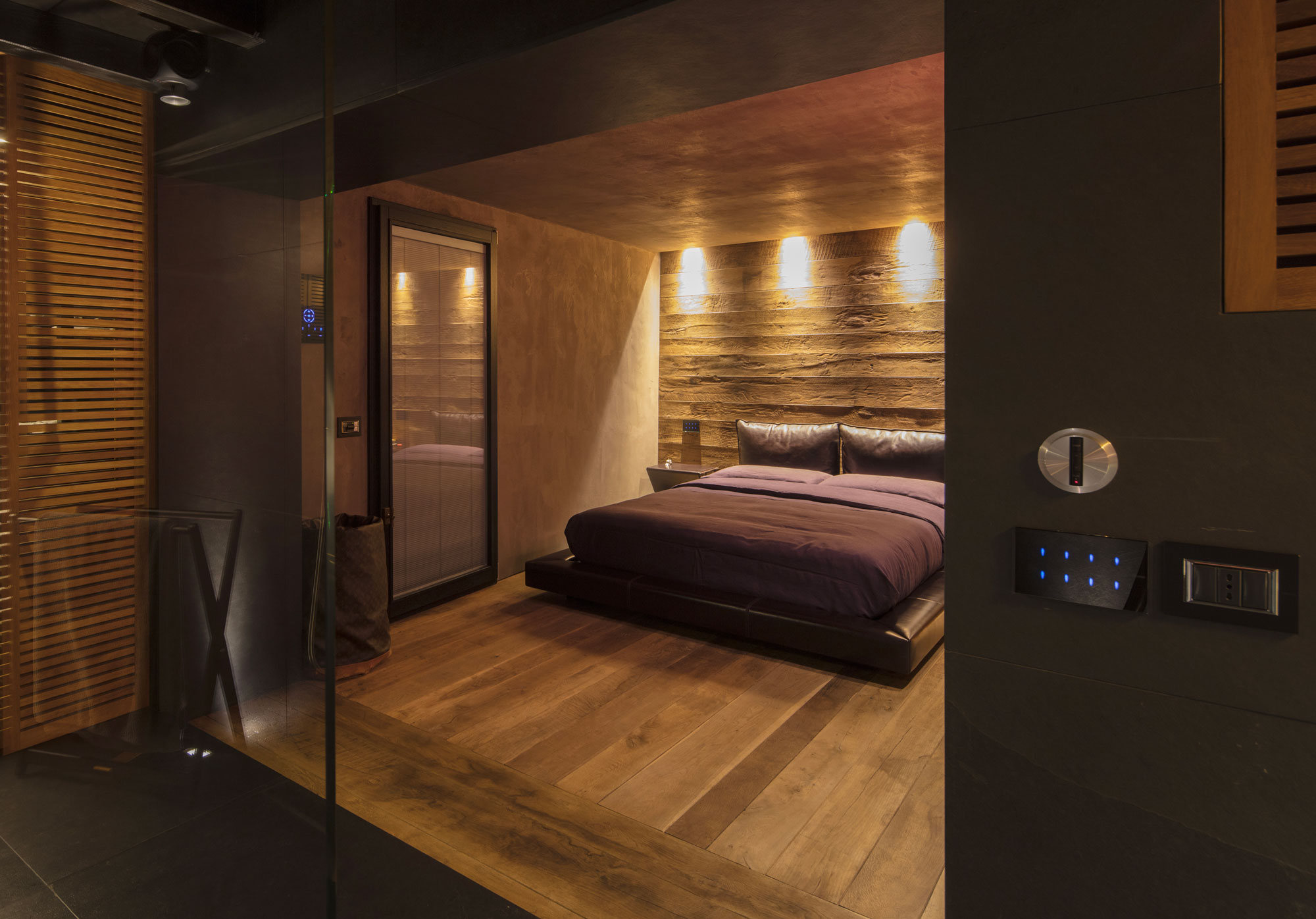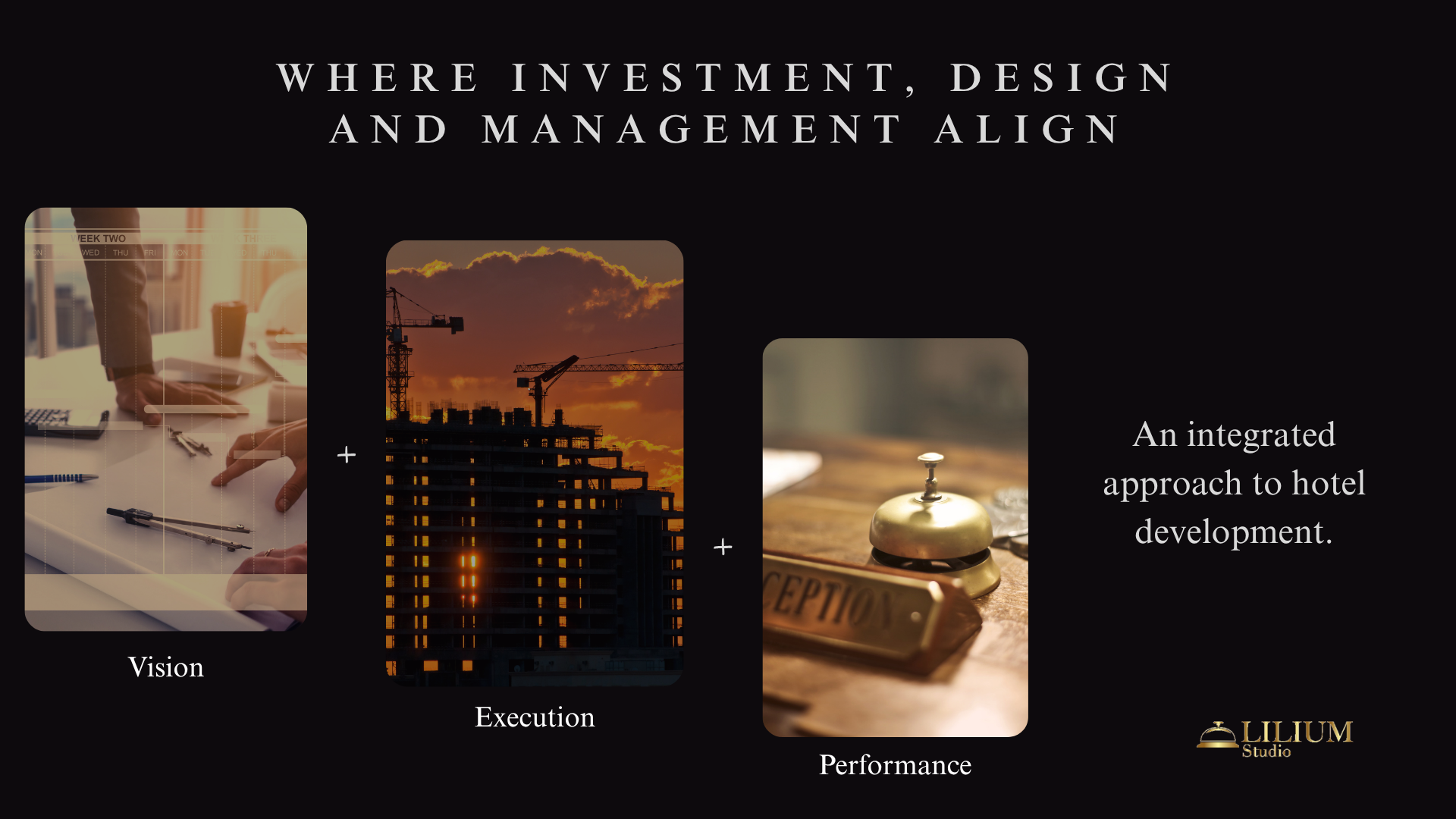The Success Formula for Hotels
A Reflection on Balance, Time, and the Craft of Building Places
Every project begins as a thought — a spark that connects imagination and purpose. Sometimes it’s a historic property waiting to breathe again, sometimes an empty space filled with potential. What matters most is not the starting point, but the way the idea grows — how vision, structure, and life come together to create something that lasts.
At Lilium Studio, we’ve learned that the most meaningful hotels are those where everything moves in harmony: the numbers that sustain them, the hands that build them, and the people who bring them to life.
When these three elements evolve together, a hotel becomes more than a destination. It becomes a living story — one that speaks softly of its place, its people, and its rhythm.
Investment — The Geometry of Vision
Investment, for us, is the art of giving shape to possibility — the place where ideas meet discipline, and imagination learns to walk within the lines of reality.
Numbers are a language we respect deeply. They define limits, yet they also reveal direction — like the edges of a map that show where discovery begins. Behind every valuation and feasibility study lies a question that guides us: what kind of value do we want to create?
A hotel is not just a financial instrument; it’s an ecosystem designed to sustain itself through time. That’s why we approach investment as a process of composition — a geometry of intuition and precision. Each line of a financial model corresponds to something tangible: a guest experience, a staff decision, a design choice. When these align, a project begins to breathe long before its first wall is built.
Our role is to help capital find its rhythm — to ensure that every euro invested has a purpose, and every purpose has a long horizon. Because when vision and structure are aligned, value doesn’t simply appear; it grows.
Construction — Where Ideas Become Places
To build is to translate thought into matter — a slow and patient act that demands both accuracy and emotion.
We approach construction as a form of craftsmanship: a balance between human intuition and technical rigor. Every proportion, every material, every light source carries meaning.
When we walk through a site, we don’t just look at foundations and measurements — we listen. To the sound of the land, to the air that moves between spaces, to the rhythm that the building will one day have.
Hospitality construction is never about perfection; it’s about coherence. A corridor that flows naturally, a window that frames the right silence, a kitchen that feels effortless to work in — these are details that shape the life of a hotel long after completion.
We see construction as a dialogue between architects and engineers, between time and weather, between imagination and gravity. And our task within that dialogue is to keep it honest — to ensure that the final form respects the promise of its beginning.
Management — The Human Architecture
When a hotel opens, it begins to live. Spaces that once echoed with the sounds of work now carry voices, footsteps, and laughter.
Management, to us, is the invisible architecture that holds all of this together. It is what gives continuity to design and meaning to numbers. Running a hotel is not a matter of control; it’s an act of listening — listening to the guest who returns because they feel at ease, to the team that knows how to make the place breathe naturally, and to the property itself: how it responds to the seasons, how it speaks through its energy, how it asks to evolve.
Every detail matters, but what truly defines a great hotel is the equilibrium between consistency and emotion. Efficiency without warmth becomes mechanical, while emotion without structure turns to chaos. The art lies in finding the point where service feels effortless because everything around it has been designed to support it.
In that moment, management stops being a task and becomes a form of hospitality in itself.
Integration — The Rhythm Behind Success
There’s a silent rhythm that connects all phases of a project — not visible on plans or contracts, yet present in the sense of alignment that keeps everything moving in the same direction.
When investment, construction, and management evolve as one conversation, decisions gain meaning. A layout is drawn with an understanding of future operations. A budget is planned with respect for design integrity. A management strategy reflects the architecture that hosts it.
This rhythm is what transforms a project into a living system. It reduces waste, strengthens collaboration, and gives everyone involved — from investors to housekeepers — a sense of shared authorship.
Integration doesn’t mean control. It means connection — the quiet assurance that each choice, whether financial or aesthetic, serves a common purpose.
At Lilium Studio, we cultivate this sense of flow from the very beginning. We invite every discipline to speak the same language, to work not in sequence but in harmony. When that happens, value doesn’t need to be pursued — it simply emerges.
Building with Care — Our Philosophy
Hospitality, at its heart, is a conversation between people and places. It’s about creating environments that welcome, that reflect the spirit of their surroundings, and that endure through time because they are true to themselves.
For us, building with care means paying attention — to details, to people, to the unseen connections that make a project meaningful. We believe in designing hotels that age beautifully, that grow with those who manage them and those who return to them. We believe that elegance lies in simplicity, and that the best projects are those where the process was as balanced as the result.
Our approach is guided by three quiet convictions: that capital should empower creativity; that construction should respect the life that will inhabit it; and that management should always serve both people and place.
These principles are not formulas — they are attitudes. They remind us that every hotel, from its first idea to its first guest, is an act of trust.
We don’t build for applause; we build for continuity — for the satisfaction of seeing something done well: a light that falls in the right place, a team that works in rhythm, a property that finds its balance with time.
That is what success means to us — a project that feels inevitable, calm, and alive.
A Final Thought
There’s a moment, after months or years of work, when you walk into a newly opened hotel and feel that everything is in its place — the scent of wood, the light on the walls, the sound of people arriving. It’s quiet, yet full of life.
In that moment, all disciplines and numbers dissolve into something simple — presence: a space that works, a team that smiles, a guest who feels at home.
That is the reward of alignment.
That is the reason we build.



